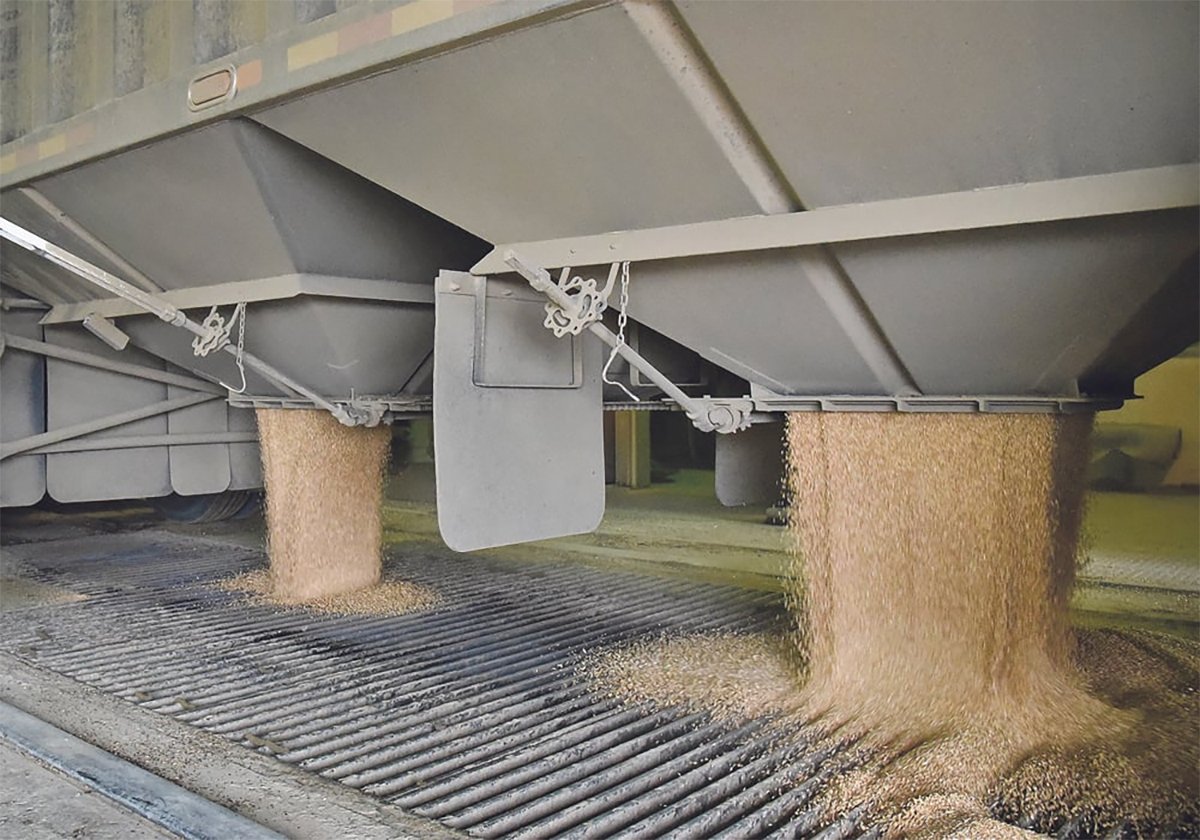Dear reader, you probably don’t waste much time thinking of the plight of poor, ink-stained scribblers like me, but let me share one weekly sadness with you.
Every week I interview quite a few fascinating, insightful people about important topics, and then use about 10 percent of what they told me. That’s all the room there is in newspaper stories.
The rest of the stuff sits in notes, until it is chucked out in the Blue Box. Some stays in my memory banks for a few days, but then it gets shoved out by all the newer stuff the news sausage machine churns out in endless loops of greasy links.
Read Also

Worrisome drop in grain prices
Prices had been softening for most of the previous month, but heading into the Labour Day long weekend, the price drops were startling.
This is sad because there’s often lots of interesting stuff in what people have told me, but that doesn’t fit into stories, either because of length, focus or something else.
So today I thought I’d go through the pile of notes from the interviews I did yesterday and last week and pick out a few nuggets of soon-to-be-chucked-out gold and share them with you here. There ain’t the same space constraints on the web:
Paul Georgy of Allendale, Inc. of McHenry, Illinois told me he thinks the coming “battle for acres” will cause corn prices to rise to $6.50 per bushel and soybeans to $13. That would bring in enough corn acres, and give solid backing for better prices for Canadian crops like wheat, barley and soybeans. That’s not so far above where we are today, but still a nice move up, if he’s right.
Randy Strychar of Oatinsight.com told me he’s strongly bullish oats, considering some new-crop 2011-12 Manitoba bids he’s seen are $3.00 to $3.25 per bushel. At an average cost of production of $1.40 to $1.50 per bushel, why wouldn’t you plant oats? Especially if you’ve been pushing other rotations. It’s a low investment crop. It uses low inputs. It demands little management. You can forward sell it in a liquid market. You can store it for a long time.
“If a farmer’s looking at canola versus oats on similar returns (per acre), I think oats is a good bet.”
John Sanow of DTN gave me a healthy dose of humility when I interviewed him about the coming battle for acres. He spoke mostly about corn and soybeans, briefly mentioned wheat, then mentioned the “fringe crops” of North America. What are the fringe crops? He named canola, oats, sorghum, barley. To us north of the border, three of those are the big, bruising heavyweights of prairie farming. To a Midwest-based crop market analyst, they’re almost not worth mentioning as a factor. So not only do we live on the fringe of the habitable territory of North America, but our crops are fringe players in a continent dominated by two giants.
Brian Clancey of Stat Publishing told me that today’s prices for red lentils say almost nothing about the value of most farmers’ crops in their bins, or about next year’s price prospects. Why is that? Because very few farmers have much high quality red lentils left unpriced. Lots of people have some lower-quality stuff they need to sell. So top-grade prices might look nice, but few people can get them.
Both Clancey and Jon Driedger of FarmLink Marketing Solutions couldn’t find much good to say about growing peas next year.
Do you want to execute multi-leg options and options-futures strategies through the ICE Futures Canada commodity exchange in Winnipeg? Well, you can now. The X is offering users the ability to trade User-Defined Spreads and post Request For Quotes through their electronic system. I interviewed Brad Vannan, the exchange’s head, about this. Although I have passed the Canadian Securities Institute’s Options Licensing course and am a big fan of options, this kind of complex stuff flies as far above my head as all those Canada geese heading south. Dear reader, it is excruciating to interview experts on topics about which your grasp is weak and about which you know you come off as a dunderheaded idiot. However, generally people like Vannan are nice and don’t laugh out loud until after you’ve hung up the phone, so you don’t have to hear the sniggering. (This is why it is scary to interview commodities guru Jim Rogers. If you ask something dumb, he’ll start cross-examining you about it. And you feel like a monkey. He’s nice, but tough. I have felt better over the years seeing him being just as challenging to reporters on Bloomberg TV and CNBC, and also making them look like sweaty monkeys. So I don’t take it personally. But he still intimidates me.)
Well, that’s about all I have time to pass on. Now I’m going put this stuff in the Blue Box. Cya later.















